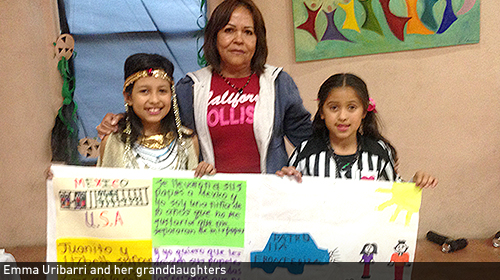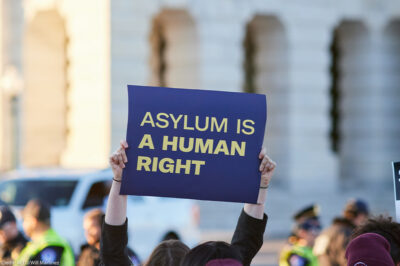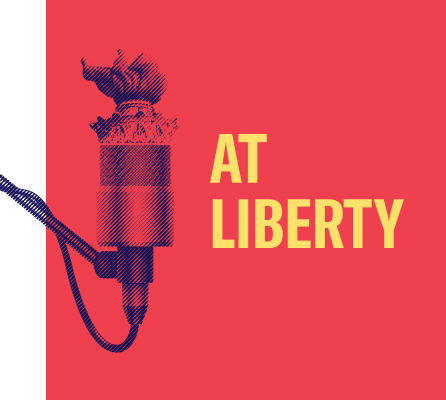
With all the talk about immigration reform that goes on behind closed doors in Washington DC, it’s rare to hear from the people who actually live on the US-Mexico border, and who will be profoundly affected by what Congress does or doesn’t do regarding immigration.
This week border residents from San Diego to Brownsville are in the nation’s capital to tell our stories through a display on the national mall of 170 handcrafted panels that make up a Border Quilt.Under the banner of “Revitalize not Militarize”, we are calling on Congress to invest in the real needs and priorities of border communities – better schools, jobs and health care — rather than spending billions of dollars on military-style border enforcement.

Modelled after the AIDS quilt, the Border Quilt includes individually crafted panels that tell distinct, poignant stories of struggle, loss and determination. Here’s a sample:
- Griselda’s handwritten panel tells the story of her family’s harrowing escape to the U.S. from Honduras. The trip included a journey on the infamously dangerous train called la Bestia, or the Beast. They fled their country because their lives were threatened by members of organized criminal groups in Honduras. When they arrived at one of the border bridges in El Paso, Texas, the U.S. agent who interviewed them verbally and physically abused her young son. Despite the intimidation, the family was able to cross into the U.S. They are now living at a migrant shelter in El Paso, awaiting a decision on their asylum request.
- Emma, from Anthony, New Mexico, has two young granddaughters, both under the age of 10, who have already witnessed the trauma of family separation so common in border communities. The parents of two of their best friends were recently deported to Mexico, and forced to leave their children behind. Every day, Emma’s granddaughters see their young playmate’s suffering, and they can’t understand why our government keeps taking parents away from their children. Their quilt panel includes their handwritten testimony and a picture of their friends drawn in marker.
- Josefina also lives in Anthony, New Mexico, about a thirty minute drive from the border. Like many border residents, she frequently travels to and from Ciudad Juarez in Mexico on business and to visit family, often waiting hours in long lines at the U.S. border crossing. Josefina is well aware that cross-border business is the lifeline of the border economy, and doesn’t understand why many of the lanes on the bridges are not staffed. She wants to know why her representatives are discussing spending billions of dollars on equipment like drones and surveillance cameras rather than investing money to make border crossings more efficient. Her quilt panel depicts one of the bridges between El Paso, TX and Ciudad Juarez, Mexico, with multiple lanes for traffic, all of which are inexplicably closed except for one.
Together the panels cry out to members of Congress to respect the 15 million people who live along the southern border, to hear our voices, to help our vibrant economies thrive, and to resist turning the place we call home into a military zone.
Organized by the Southern Border Communities Coalition, including the ACLU of New Mexico Regional Center for Border Rights. The Border Quilt is on display on the National Mall in front of the Capitol Building all day November 20th. For more about the quilt project, click here.
Learn more about immigration reform and other civil liberties issues: Sign up for breaking news alerts, follow us on Twitter, and like us on Facebook.




